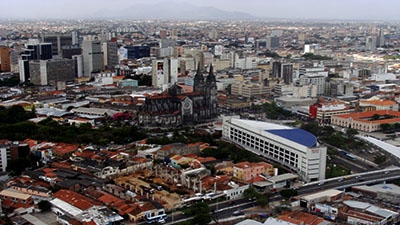Challenge
Ceará’s state Government had achieved relatively high levels of service coverage in education, health, and water and sanitation. The Government sought to emphasize service quality improvements, expand water and sanitation coverage, and strengthen the business climate for investment and innovation to improve economic growth rates. The Government’s objectives were to:
- Reduce neo-natal and maternal mortality through improved family health care and more efficient hospital administration.
- Improve early childhood literacy and the quality of secondary education to better equip school-leavers for the job market.
- Increase the reliability and level of access to clean water and sewage services.
- Facilitate new business registration and provide broadband access to private citizens and enterprises.
Solution
The Ceará Inclusive Growth Project was the second in a loan sequence supporting institutional modernization and social advances in the state. The project supported 10 existing government investment programs necessary to achieve the desired service improvements. Results-based management was the project’s cross-cutting lynchpin, with loan disbursements tied to effective budget execution and to 14 predetermined annual performance targets. The chief programs supported were in education (early childhood literacy), health (quality certification of family health teams and improvements in hospital administration), water (new water and sewage connections to households) and business registration (simplifying requirements for new businesses).
Results
The project was designed to leverage existing Government programs, while heightening attention on public service delivery achievements. A small share of the loan funded technical assistance investments to meet selected targets. The project helped to support a number of key outcomes:
- Second-grade literacy rates increased from 56 percent in 2009 to 81.4 percent in 2011.
- Cost accounting systems were installed in 15 hospitals by 2011.
- Family Health Teams with a team quality evaluation rating rose from zero to over 75 percent from 2008 to 2011.
- Water to agriculture and industry invoiced for payment increased from 12.1 to 39 percent from 2007 to 2011.
- Urban water connections shot from 51,000 in 2007 to 315,000 in 2011, while sewer connections increased from 22,000 to 139,000. Assuming four persons per household, an estimated 1.1 million persons benefited from the new water connections, and 468,000 benefited from the new sewer connections.
- New business registrations completed in less than 72 hours increased from 19 percent in 2007 to 80 percent in 2011.
- Broadband Internet infrastructure extended from the state capital to an additional four million citizens between 2007 and 2011.
- The number of Government secretariats with public Annual Performance Reports increased from zero in 2008 to 15 in 2011.
Bank Group Contribution
The Bank provided a total of nearly US$237 million to the state treasury to support identified government investment programs that were responsible for those public sector achievements. Just over US$3 million were disbursed for technical assistance.
Moving Forward
Performance-based lending similar to the Ceará Inclusive Growth Project is an increasing share of the Bank’s loan portfolio in Brazil and in the region. In Ceará, discussions for another follow-up operation were already underway in 2012. The new Program-for-Results lending instrument is expected to extend the results-based-management culture more widely within the state’s public sector workforce, while tackling new performance areas such as watershed management and solid waste management.
Beneficiaries
The Regional Hospital of Iguatu provides a full range of services, including surgery and outpatient care. A hospital administrator remarked that after the cost accounting system was put in place, the average hospitalization period for surgeries was reduced from 8.2 days in 2011 to 7.0 days the following year. The cost per patient was reduced by roughly 20 percent. The hospital was able to increase by nearly 20 percent the number of patients treated per year. The state Government’s annual cost for data transmission fell from R$20 million in 2007 to R$4 million per year with the state’s new broadband Internet infrastructure, and the speed is of course much faster.
